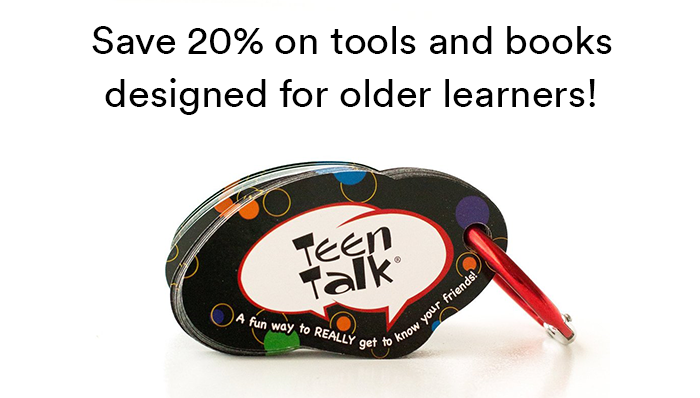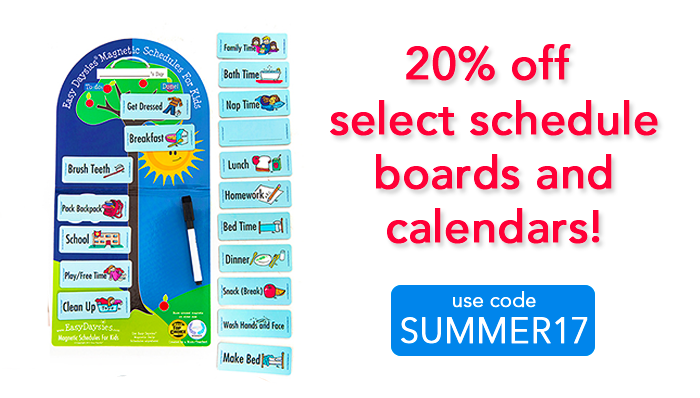Category Archives: Daily Living Skills
Finding A Balance: Yoga Supports For ASD!
Simplifying The Morning Routine
ABA therapy can be used to teach/increase a variety of adaptive skills, such as tooth brushing, toileting, hair brushing, shoe tying, making a bed, etc. My favorite definition of an adaptive skill is anything that will have to be done for the learner, if the learner does not learn the skill. So if I don’t teach my child how to dress him/herself, then I will have to dress my child.
A common concern many of my clients have around adaptive functioning is the dreaded Morning Routine. Since my clients are usually school age, I have ample opportunity to help families target issues that regularly pop up during that frenzied time in the morning of trying to get the child out of the door on time. Issues like: task refusal, off task behavior, prompt dependency, skipping steps of the routine/completing the routine out of order, etc.
ABA interventions should always be individualized, but some of my most effective strategies for simplifying the morning routine include:
– Visuals! Visuals are your friend 🙂
– Use of auditory cues (timers)
– ORGANIZATION
With some simple tweaks here and there and adding in more supports, the morning routine can be less stressful, more efficient, and require less intrusive prompting which equals more independence for your child.
Let’s jump in:
Add visuals: I say “add visuals” and not “add more visuals”, because usually what I see is that families who struggle the most with the morning routine are not using any visual supports. If you are regularly struggling during the morning routine but you already have visual supports in place, then that’s a gold star for you. You are ahead of the game. If you are new to visual supports, just keep reading. Think of a visual support as a way to minimize prompting or assistance. If you have to stand in the bathroom doorway, physically assist your child, or keep giving the same demand over and over (“Make up your bed Evan ……. Evan, did you make your bed?”), then you definitely need to add some visuals. It is much easier to fade the prompt of a visual, than to fade your voice or your presence. Or to put it another way, do you want to have to stand in the doorway to make sure tooth brushing happens when your child is 25? Here are some awesome examples of visual supports, all were found on Pinterest.
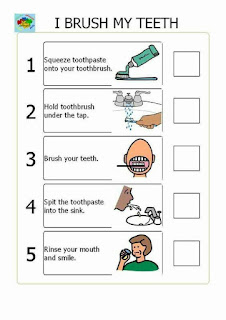



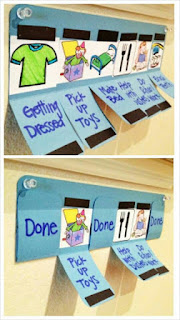
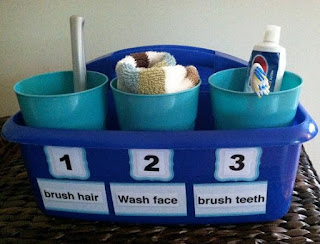
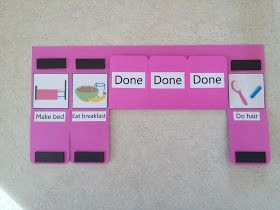
Auditory cues: The use of a timer can be such a helpful addition to the morning routine because time is usually of the essence. We have to go, and we have to go now. For many of my defiant kiddos, those with attention issues, or those with lots of escape maintained behaviors, the simplest demand (e.g. “Put your socks on”) can take ages and ages to actually happen. Decide on a specific amount of time for the skill to occur, and then set a timer. If the child can beat the timer, then allow them to contact reinforcement. Depending on the child, this could mean a treat, getting to pick what they wear that day, 2 minutes of TV time, etc. Make the concept of “hurry up” more concrete by helping the child understand how quickly tasks needs to be completed.
Organization: This tip is more for you than the child. Organization or proper set up for the morning routine does not begin that morning, it begins the night before. Part of the bedtime routine can include setting up items for the next day. This could mean lining up the soap, face towel, toothpaste, and toothbrush by the bathroom sink. Or this could mean putting the backpack by the front door, so there is no frantic search for it in the morning. How you organize will depend on the specific issues you are having in your home. The point is to set the child up for success. For younger children (especially if you want to increase independence) line up needed items/materials in their correct order so your assistance is not needed. For example, in the bedroom line up underwear, socks, pants, shirt, and shoes. In the kitchen, line up the bowl, spoon, and cereal box. For some children you may need to put number cards on each item (e.g. put a “1” card on the underwear). Any step you can do the night before will save precious time the next morning, and the materials being visible helps serve as a prompt of what to do next.
*Bonus Tip: A good way to practice the skills required for a successful morning routine is to incorporate weekend practice. If these skills are only performed M-F with a time crunch, then you’re setting yourself up for lots of frustration. On the weekends, still have your child go through the morning routine. Use this to fine- tune skills, or provide more repetition than is possible on a Monday morning. If tooth brushing is always a struggle, consider modifying the visuals or making them larger/more detailed. Try removing yourself, and only checking on your child periodically. If the child is older or needs less support, try implementing a checklist that the child completes. As they perform each skill, they check a box. When all the boxes are checked they bring the checklist to you for review.
About The Author: Tameika Meadows, BCBA
“I’ve been providing ABA therapy services to young children with Autism since early 2003. My career in ABA began when I stumbled upon a flyer on my college campus for what I assumed was a babysitting job. The job turned out to be an entry level ABA therapy position working with an adorable little boy with Autism. This would prove to be the unplanned beginning of a passionate career for me.
From those early days in the field, I am now an author, blogger, Consultant/Supervisor, and I regularly lead intensive training sessions for ABA staff and parents. If you are interested in my consultation services, or just have questions about the blog: contact me here.”
This piece originally appeared at www.iloveaba.com.
Using Contingency Contracts in the Classroom
As adults, we’re fairly accustomed to contracts for car loans, new employment, or updates to our smartphones. But contracts can also be beneficial in the classroom setting.
A contingency contract is defined as “a mutually agreed upon document between parties (e.g., parent and child) that specifies a contingent relationship between the completion of specified behavior(s) and access to specified reinforcer(s)” (Cooper, Heron, & Heward, 2007). There are several studies that indicate using a contingency classroom can be beneficial in the classroom setting.
Cantrell, Cantrell, Huddleston, & Wooldridge (1969) identified steps in creating contingency contracts:
(1) Interview the parent or guardian of the student. This allows you to work together to identify problem behaviors to be addressed, identify the contingencies currently maintaining these behaviors, determine the child’s current reinforcers, and establish what reinforcement or punishment procedures will be used.
(2) Use this information to create a clear, complete, and simple contract. The authors provide examples of how these contracts might look. You can vary the contract based upon the behaviors you are addressing with your student and the student’s ability to comprehend such contracts.
(3) Build data collection into the contract itself. You can see an example from the article below. For this example, it is clear how points are earned and how the child can utilize those points, and the contract itself is a record of both the points and the child’s behaviors.
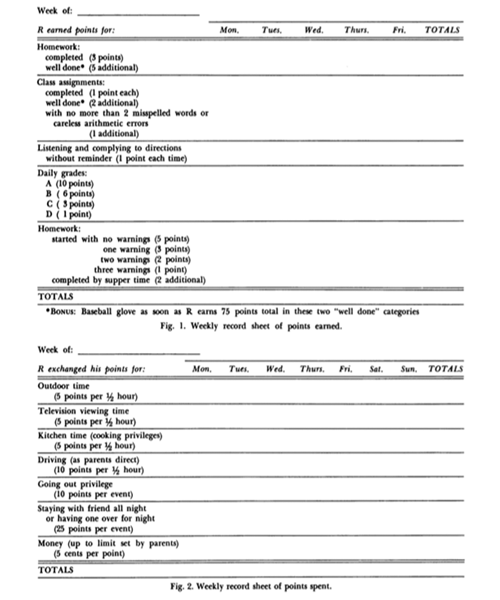
There are clear benefits to utilizing such contingency contracting: building relationships across different environments in which the student lives and works, addressing one or more challenging behaviors simultaneously, and providing opportunities for students to come into contact with reinforcement. You can read the entire article here:
Cantrell, R. P., Cantrell, M. L., Huddleston, C. M., & Wooldridge, R. L. (1969). Contingency contracting with school problems. Journal of Applied Behavior Analysis, 2(3), 215-220.
And much more has been written about contingency contracting. If you’d like to learn more, we suggest taking a look at one or more of the following:
Bailey, J. S., Wolf, M. M., & Phillips, E. L. (1970). Home-based reinforcement and the modification of pre-delinquent’s classroom behavior. Journal of Applied Behavior Analysis, 3(3), 223-233.
Barth, R. (1979). Home-based reinforcement of school behavior: A review and analysis. Review of Educational Research, 49(3), 436-458.
Broughton, S. F., Barton, E. S., & Owen, P. R. (1981). Home based contingency systems for school problems. School Psychology Review, 10(1), 26-36.
Miller, D. L., & Kelley, M. L. (1991). Interventions for improving homework performance: A critical review. School Psychology Quarterly, 6(3), 174.
WRITTEN BY SAM BLANCO, MSED, BCBA
Sam is an ABA provider for students ages 3-15 in NYC. Working in education for twelve years with students with Autism Spectrum Disorders and other developmental delays, Sam utilizes strategies for achieving a multitude of academic, behavior, and social goals. Sam is currently a PhD candidate in Applied Behavior Analysis at Endicott College. She is also a lecturer in the ABA program at The Sage Colleges.
Pick of the Week: Schedules and Calendars!
School’s out! This week only, take 20% off items to keep kids on schedule all summer long!
*Promotion is valid until June 5th 2017 at 11:59pm ET. Offer cannot be applied to previous purchases, combined with any other offers, transferred, refunded, or redeemed and/or exchanged for cash or credit. Different Roads to Learning reserves the right to change or cancel this promotion at any time. To redeem offer at differentroads.com, enter promo code SUMMER17 at checkout.
Thinking Ahead: Self-Determination in the Elementary Years
 Though I typically work with elementary-aged children, I’m consistently thinking about what skills the child needs in order to be independent and ready to transition out of the school setting as an adult. Sometimes, it may seem that it is too early to be thinking about adulthood when the child is only 8 or 9, but there are things we can, and should, be doing to prepare our students from an early age.
Though I typically work with elementary-aged children, I’m consistently thinking about what skills the child needs in order to be independent and ready to transition out of the school setting as an adult. Sometimes, it may seem that it is too early to be thinking about adulthood when the child is only 8 or 9, but there are things we can, and should, be doing to prepare our students from an early age.
One of my favorite articles addressing this issue is a 2015 article from Teaching Exceptional Children by Papay, Unger, Williams-Diehm, and Mitchell. (The entire issue is about transition and is a fantastic read. You can view that issue here: https://journals.sagepub.com/toc/tcxa/47/6.) While the Individuals with Disabilities Education Act requires transition planning to begin at age 16, and some states require it to begin at age 14, if we want to provide more successful outcomes for individuals with special needs, we must begin thinking about the transition into adulthood at a younger age.
Papay et al., suggest focusing on self-determination. “Individuals who are self-determined have better knowledge of their own interests, strengths, and needs, and they carry out their own desires. Self-determined individuals make decisions, set goals, and carry out the necessary steps to ensure their goals are accomplished” (Papay, et al., p. 311, 2016). The authors then go on to suggest activities for incorporating self-determination at the elementary level, such as understanding grades, using responsibility charts, making choices, and problem solving. In the push to get students up to speed with academic skills, we may be leaving out these core skills that provide success in adulthood. And these skills, such as goal-setting and problem-solving are skills that typically developing children need years of practice to develop.
So, how do you get started? Here are a few suggestions:
- First, read the full article here: https://journals.sagepub.com/doi/pdf/10.1177/0040059915587901
- Call a meeting of the adults in the child’s life and the child to talk about appropriate goals around these specific skill sets.
- Write down the ways in which you can incorporate self-determination activities in your student’s daily life.
- Identify short-term outcomes you would like to see in relation to the activities you’ve identified.
- Share with your colleagues and other students what you are doing in relation to self-determination to help normalize this conversation on the elementary level.
In recent decades, we have come a long way in providing services for youth with special needs. At this point in time, it is becoming more and more clear that we need to be doing more for adults with special needs, but we can’t wait until the individual is well into their teenage years to begin thinking about it.
Papay, C., Unger, D. D., Williams-Diehm, K., & Mitchell, V. (2015). Begin With the End in Mind Infusing Transition Planning and Instruction Into Elementary Classrooms. Teaching Exceptional Children, 47(6), 310-318.
Building Variability Into The Routine
Several years ago, I was working with a 6-year-old boy we’ll call Terrence. Terrence was diagnosed with autism. He was a very playful child who was generally good-tempered, enjoyed playing with trains and watching TV, and posed few difficult behavior issues for his parents…until the day there was construction on their walk from the grocery store to their apartment and they decided to take a different route home. What happened next is what most people would call a full-blown meltdown: Terrence dropped to the ground, screaming and crying, and refused to move.
Many of the parents I work with have a similar story when it comes to their child with autism and an unexpected change in the routine. The change varies: the favorite flavor of fruit snacks is out of stock at the store or the babysitter greeted the child at the bus instead of the parent or they grew out of the coat they wore the past two winters… In fact, it can be difficult to anticipate exactly what specific routine may be a trigger for your learner. This is precisely why building variability into the routine can be helpful.
Here are a few things to consider:
- First, think about the routines that are the most likely to be interrupted. Make a list of these so you can begin thinking about how to address those issues.
- Second, work with your team (whether that means family or practitioners that work with your learner) to select 2-3 routines to focus on first.
- Discuss how those routines would most likely be interrupted. For instance, a favorite TV show may be interrupted during election season or you may have a family function when the TV show is aired. In teaching your learner to be flexible with changes in routine, you will contrive changes that are likely to occur to give your learner quality practice.
- Plan to vary the routine. Essentially, you are setting up the change in routine, but you will be prepared in advance to help your learner behave appropriately. (You’re much more likely to experience some success in this scenario than you would be if a change in routine occurs unexpectedly and/or last minute.)
- Give your learner a vocabulary for what is happening. I teach many of my students the term “flexible.” I might say, “I appreciate how you’re being flexible right now” or “Sometimes when plans change we have to be flexible. This means…”
- Reinforce appropriate behaviors related to flexibility! You want to be clear when they’ve made an appropriate, flexible response. In the planning phase, you can discuss what appropriate reinforcers might be for the routines you are targeting.
If you build in variations in routine and teach your learner some strategies for being flexible, you and your learner are much more likely to be successful in navigating unexpected changes.
WRITTEN BY SAM BLANCO, MSED, BCBA
Sam is an ABA provider for students ages 3-15 in NYC. Working in education for twelve years with students with Autism Spectrum Disorders and other developmental delays, Sam utilizes strategies for achieving a multitude of academic, behavior, and social goals. Sam is currently a PhD candidate in Applied Behavior Analysis at Endicott College. She is also a lecturer in the ABA program at The Sage Colleges.
Pick of the Week: Sensory Tools for Staying Calm And Focused
Maintaining calm and focus can be a challenge in a busy classroom. Our solution? Help reduce fidgeting and reward good behaviors with these sensory tools for staying calm and focused: the Fidgets Kit and Reinforcer Kit. For this week’s Pick Of The Week, save 20% on these items by using promo code FOCUS20 at checkout.
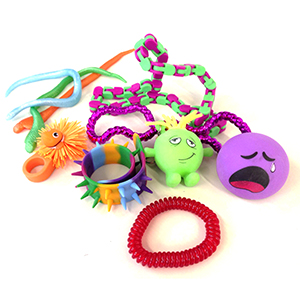
Fidget toys can be a great and socially acceptable management tool for stereotypical or repetitive behavior in the classroom or community that may be distracting to classmates. While there are many reasons for fidgeting, including sensory overload, boredom, frustration, or anything in between, the good thing is that it can be easily managed. Some students find the repetitive action of “fidgeting” to be calming; thus, they are then better able to focus on the task at hand. Created in conjunction with our behavioral consultant Stacy Asay, LMSW, our Fidgets Kit includes an array of tools that provide a variety of sensory experiences: stretchy, chewy, spiky, twisty, bumpy, twisty, clicky, bouncy and smooshy!
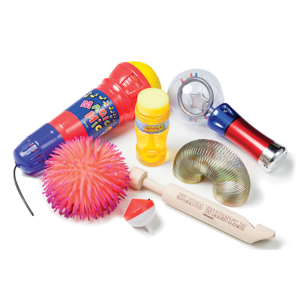
Our Reinforcer Kit provides a selection of products that many children diagnosed with autism would not only want to play with but would be willing to “work for” during their one-on-one intervention. Although teachers can always use praise, food, candy and other toys, we think this bright and colorful kit of tools will help our families get a head-start on what to use for children wanting a favored object. The kit includes:
Spectra Spinner (battery operated)
Wooden Slide Whistle
Magic Mic (an Echo Microphone)
Magic Spring
Squishy Flashing Ball
Jelly Ring
Bubbles and more!
*Promotion is valid for one-time use through September 20, 2016. Offer cannot be applied to previous purchases, combined with any other others, transferred, refunded, or redeemed and/or exchanged or cash or credit. Different Roads to Learning reserves the right to change or cancel this promotion at any time. To redeem offer at differentroads.com, enter promo code FOCUS20 at checkout.
Pick of the Week: 15% Off Handwriting Tools
Get a head start on helping your child improve their handwriting skills before the school year begins! This week, take 15% off our handwriting programs and tools with promo code WRITE15 at checkout!
 Jumbo triangular pencils are just right for the student who is making the transition from using grips to regular pencils. These pencils are fatter and have a soft dot comfort zone for a non-slip grip. The box comes with 12 pencils, all in black lead.
Jumbo triangular pencils are just right for the student who is making the transition from using grips to regular pencils. These pencils are fatter and have a soft dot comfort zone for a non-slip grip. The box comes with 12 pencils, all in black lead.
Get your Jumbo Triangular Pencils here!
 We’ve compiled the Writing & Art Kit to support students in their writing and arts & crafts skills. This kit contains: a pair of child-safe scissors, lined paper for upper- and lowercase writing, and a jumbo grip triangular pencil that improves a child’s grip directly on the pencil.
We’ve compiled the Writing & Art Kit to support students in their writing and arts & crafts skills. This kit contains: a pair of child-safe scissors, lined paper for upper- and lowercase writing, and a jumbo grip triangular pencil that improves a child’s grip directly on the pencil.
For the arts, we’ve included triangular crayons, triangular glue sticks, both for a better grip, and glossy colored paper for bright, shining artwork.
 Sensible Pencil, by Linda C. Becht, is a handwriting program that contains 200 sequential worksheets to help new writers achieve success quickly and pain-free. Children start with simple horizontal and vertical lines that are presented as fun, and then go on to the other basic lines needed for handwriting skills. The program also includes a progress chart and a manual for teachers and parents. Notebook format.
Sensible Pencil, by Linda C. Becht, is a handwriting program that contains 200 sequential worksheets to help new writers achieve success quickly and pain-free. Children start with simple horizontal and vertical lines that are presented as fun, and then go on to the other basic lines needed for handwriting skills. The program also includes a progress chart and a manual for teachers and parents. Notebook format.
*Code is valid for one-time use through August 16, 2016 at 11:59pm. Offer cannot be applied to previous purchases, combined with any other offers, transferred, refunded, or redeemed and/or exchanged for cash or credit. Different Roads to Learning reserves the right to change or cancel this promotion at any time. To redeem offer at differentroads.com, enter promo code WRITE15 at checkout.
Pick of the Week: Oops Groups Categories — and more!
 Can you find the “oops” to help complete the Oops Groups Express Train? Our new Oops Groups Categories is a unique puzzle game where players use concentration and memory to find same-color Oops Groups Express puzzle pieces. To win, players must sequentially build the train and identify the one item on each puzzle piece that does not belong with the other items. Categories include food, animals, tools, season, and colors.
Can you find the “oops” to help complete the Oops Groups Express Train? Our new Oops Groups Categories is a unique puzzle game where players use concentration and memory to find same-color Oops Groups Express puzzle pieces. To win, players must sequentially build the train and identify the one item on each puzzle piece that does not belong with the other items. Categories include food, animals, tools, season, and colors.
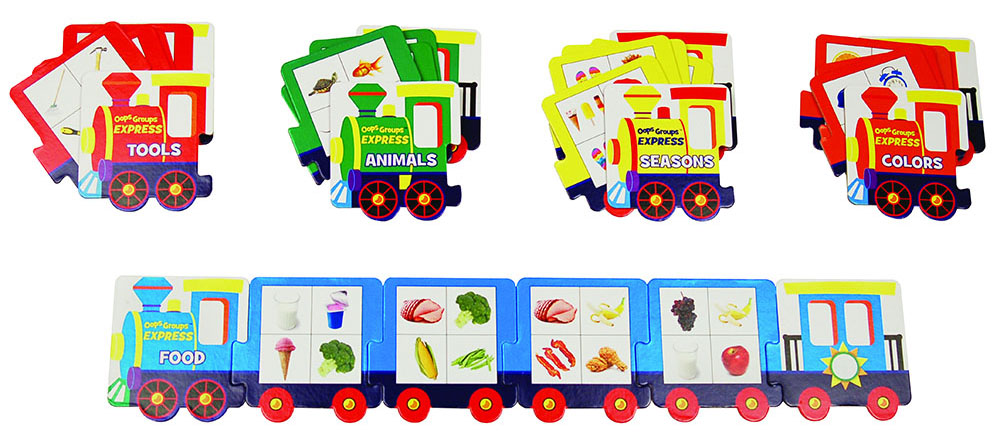
This week, you can save 15% on the Oops Groups Categories game, along with our other favorite educational games and toys for teaching categorization and sorting!
Use our promo code OOPS15 at check-out to redeem your savings!
Promotion is valid until August 2, 2016 at 11:59pm ET. Offer cannot be applied to previous purchases, combined with any other offers, transferred, refunded, or redeemed and/or exchanged for cash or credit. Different Roads to Learning reserves the right to change or cancel this promotion at any time. To redeem offer at differentroads.com, enter promo code OOPS15 at checkout.

